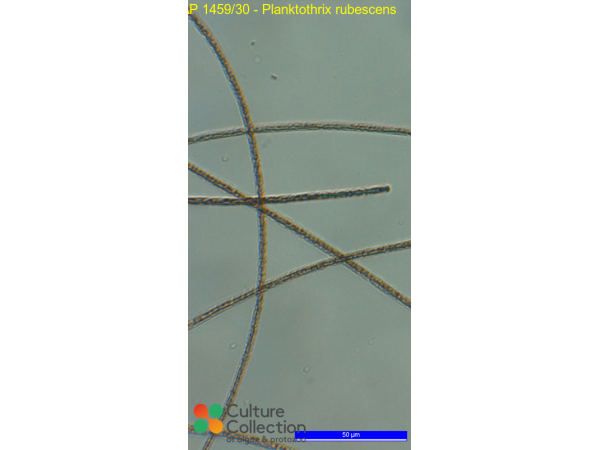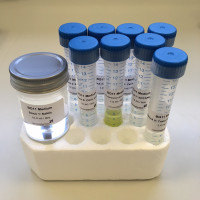Note: for strains where we have DNA barcodes we can be reasonably confident of identity, however for those not yet sequenced we rely on morphology
and the original identification, usually made by the depositor. Although CCAP makes every effort to ensure the correct taxonomic identity of strains, we cannot guarantee
that a strain is correctly identified at the species, genus or class levels. On this basis users are responsible for confirming the identity of the strain(s) they receive
from us on arrival before starting experiments.
For strain taxonomy we generally use AlgaeBase for algae and
Adl et al. (2019) for protists.
| Attributes | |
| Authority | (de Candolle ex Gomont) Anagnostidis & Komarek 1988 |
| Isolator | Meffert |
| Collection Site | Lake Plön, Germany |
| Notes | uniseriate filament (one cell wide); LC-MS analysis by RGU in 2021 for cylindrospermopsins, microcystins and anatoxins: detected microcystins DM-LR, [965]? |
| Axenicity Status | Bacteria present |
| Area | Europe |
| Country | Germany |
| Environment | Freshwater |
| GMO | No |
| Group | Cyanobacteria |
| Pathogen | Not pathogenic: Hazard Class 1 |
| Strain Maintenance Sheet | SM_FreshwaterCyanobacteria.pdf |
| Toxin Producer | Toxic |
| Type Culture | No |
| Taxonomy WoRMS ID | 572064 |
| Other Designations | FBIU X13 |
| Formerly Listed in CCAP as | Oscillatoria rubescens de Candolle ex Gomont 1892 |
CCAP 1459/30
Planktothrix rubescens
- Product Code: CCAP 1459/30
- Availability: See Availability/Lead Times
Related Products
CCAP FABG-C
BG11 Medium
CONCENTRATED STOCKS
Non-sterile concentrated stocks to make up 5 litres of BG11 medium. BG11 Medium is used for culturi
CCAP FABG-P
BG11 Medium
1 LITRE PREMADE
1 litre of sterile, ready to use, BG11 medium. BG11 Medium is used for culturing freshwater cyanoba



